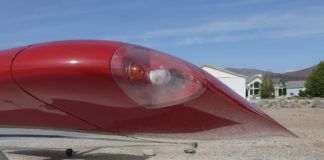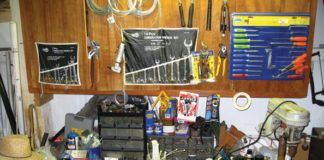Need for Speed
Nigel Speedy needs to be careful not to exceed 180 knots CAS. I noticed in his article, “Effects of Fairings on Speed” [March 2018], that his bird does not have 12-inch N-numbers displayed. Is there an exception to FAR 45.29 (b) (1) (iii) in cases like this?
—Jim Auman
Thanks for the note. The problem with that FAR (in the experimental world) has always been the actual definition of cruise speed because it depends on if you mean DESIGN cruise speed or what a person actually flies. An RV-8 can be built with anything from 150 to 200+ horsepower, and while Van had a design cruise speed in the original design (that can be derived), the cruise speed of a particular aircraft will depend on the builder’s engine and prop choice. Since Van’s is not the builder of record for each aircraft, it is hard to say what the design cruise speed of each individual aircraft really is supposed to be.
That and the fact that Nigel usually flies near Mojave, California, where the density altitude is high, so at his maximum TAS his CAS is rarely going to be very high, so that makes it a moot point.—Ed.
Maintenance Matters
This idiot is very thankful each month for “Maintenance Matters,” the idiot’s guide to maintenance. It’s a brilliant series of articles that I have been filing away for reference for our RV-8. Keep them coming!
—Andrzej Zmyslowski
Glad you enjoy the column. We never consider anyone an idiot here in aviation—there are just some things that some people have yet to learn.—Ed.
Climb Performance
I read Nigel Speedy’s article [“Using Level Accelerations to Determine Climb Performance,” November 2018] with great interest, but it seemed to me there might be some things missing that would enable me to use this technique. Page 24 states a polynomial can be used to smooth the curve, and a polynomial equation is shown at the top of the page. This equation shows y as a function of x. Since these values are likely to change for each aircraft tested, I would think the multipliers for each term of the equation would need to change. Or have I missed something?
—Jim Belcher
Nigel Speedy responds: Thanks for the question, Jim. Yes, you are correct that each aircraft will have different coefficients for the polynomial equation. In fact, the same aircraft will have different coefficients under different conditions like altitude and gross weight. You would fly the level acceleration in your aircraft under specific conditions and then determine the corresponding curve fit for your data. You would then use these aircraft-specific numbers to determine your climb performance under the conditions tested. The numbers shown are for my specific aircraft and were for example only. Yours will almost certainly be different.
Completed Projects
Recently completed a homebuilt? After all that hard work, you deserve a little fame! Send a photo and brief description to KITPLANES.
Write to [email protected].




